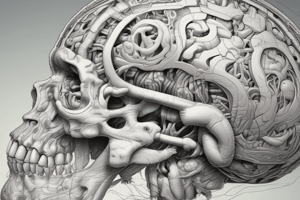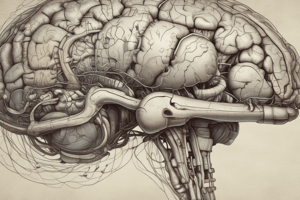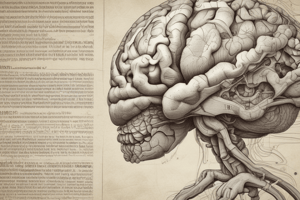Podcast
Questions and Answers
Flashcards are hidden until you start studying
Study Notes
Structure of the Caudate Nucleus
- The caudate nucleus has a large anterior head that tapers to a body and a down-curving tail.
- The head is covered with ependyma and lies in the floor and lateral wall of the anterior horn of the lateral ventricle, anterior to the interventricular foramen.
Relationship with Surrounding Structures
- The caudate nucleus abuts the thalamus, separated by a groove, the sulcus terminalis, which contains the stria terminalis.
- The caudate nucleus is largely separated from the lentiform complex by the anterior limb of the internal capsule.
Continuity with Other Brain Regions
- The inferior part of the head of the caudate nucleus becomes continuous with the putamen.
- The anterior part of the tail becomes continuous with the amygdala nucleus.
Lentiform Complex
- The lentiform complex consists of the putamen and globus pallidus, separated by a thin layer of fibers, the external medullary lamina.
- The globus pallidus has two segments: lateral and medial, separated by the internal medullary lamina.
Striatopallidal Pathways
- Striatopallidal fibers project to the lateral pallidal segment, forming the indirect pathway.
- Striatopallidal fibers project to the medial pallidal segment, forming the direct pathway.
- Striatopallidal fibers use GABA as their primary transmitter and also contain enkephalin.
Studying That Suits You
Use AI to generate personalized quizzes and flashcards to suit your learning preferences.




